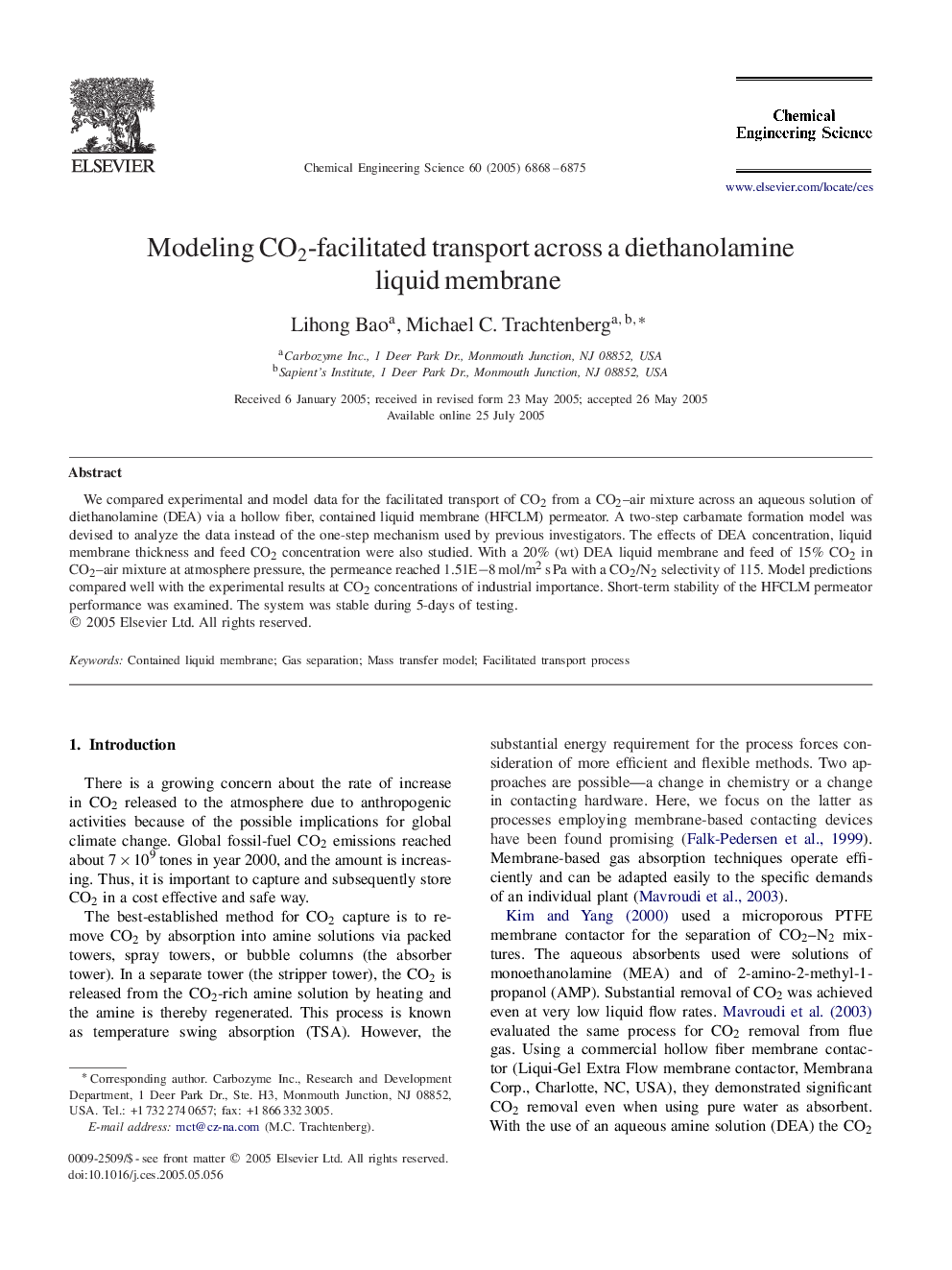| Article ID | Journal | Published Year | Pages | File Type |
|---|---|---|---|---|
| 160147 | Chemical Engineering Science | 2005 | 8 Pages |
We compared experimental and model data for the facilitated transport of CO2 from a CO2–air mixture across an aqueous solution of diethanolamine (DEA) via a hollow fiber, contained liquid membrane (HFCLM) permeator. A two-step carbamate formation model was devised to analyze the data instead of the one-step mechanism used by previous investigators. The effects of DEA concentration, liquid membrane thickness and feed CO2 concentration were also studied. With a 20% (wt) DEA liquid membrane and feed of 15% CO2 in CO2–air mixture at atmosphere pressure, the permeance reached 1.51E−8 mol/m2 s Pa with a CO2/N2 selectivity of 115. Model predictions compared well with the experimental results at CO2 concentrations of industrial importance. Short-term stability of the HFCLM permeator performance was examined. The system was stable during 5-days of testing.
